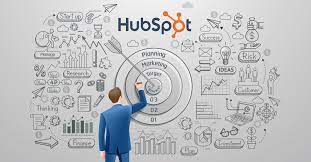As businesses continue to evolve and adapt to the ever-changing technological landscape, the need for a seamless integration becomes increasingly important. One of the most commonly deployed solutions for businesses is HubSpot. This all-in-one marketing, sales, and service platform acts as a central hub for all your business processes. HubSpot has a variety of features that can help your business thrive, but optimizing your processes for maximum efficiency is key. In this article, we will explore the benefits of seamless integration with HubSpot and how you can optimize your business processes for ultimate success.
1. Use workflows to automate routine tasks
One of the most advantageous features of HubSpot is the ability to automate routine tasks using workflows. Workflows enable you to create a series of automated actions that are triggered based on specific criteria. This can range from simple tasks such as sending a follow-up email after a form submission to more complex tasks such as notifying your sales team when a lead has reached a certain stage in the sales funnel. By automating your routine tasks, you are freeing up valuable time that can be spent on more important aspects of your business.
2. Utilize lead scoring to prioritize your leads
Lead scoring is another feature available in HubSpot CMS that can help streamline your business processes. By assigning values to the actions your leads take on your website and other touchpoints, you can identify which leads are most likely to become customers. This enables your sales team to prioritize their efforts and focus on the leads that are most likely to convert. By using lead scoring in conjunction with workflow automation, you can create a powerful system that helps you convert more leads into customers.
3. Enable Two-Way Synchronization with Your CRM
Enabling two-way synchronization with your CRM is a crucial step in achieving a seamless integration with HubSpot. With two-way synchronization, any changes made in your CRM are automatically updated in HubSpot and vice versa. This ensures that your data is accurate and up-to-date across all your platforms. It also eliminates the need to manually enter data into both systems, which can be time-consuming and prone to errors.
4. Use analytics to gain insights into your business processes
To optimize your business processes, you need to know what’s working and what’s not. HubSpot’s analytics tools can provide you with valuable insights into how your processes are performing. By tracking key metrics such as website traffic, lead conversion rates, and customer retention rates, you can identify areas that need improvement and make data-driven decisions to optimize your processes.
5. Integrate with third-party applications for maximum efficiency
HubSpot integrates with over 500 third-party applications, including popular tools such as Salesforce, Zapier, and Google Analytics. By integrating with these tools, you can further optimize your business processes and maximize your efficiency. For example, integrating with Zapier enables you to automate tasks across multiple platforms, while integrating with Google Analytics gives you deeper insights into your website traffic.
Conclusion:
In conclusion, achieving a seamless integration with HubSpot is essential for businesses looking to optimize their processes for ultimate success. By utilizing HubSpot’s features such as workflows, lead scoring, two-way synchronization, analytics, and third-party integrations, you can streamline your business processes, save time, and improve your overall efficiency. With HubSpot as your central hub, you can achieve your business objectives and take your success to the next level.
